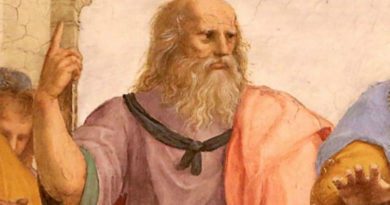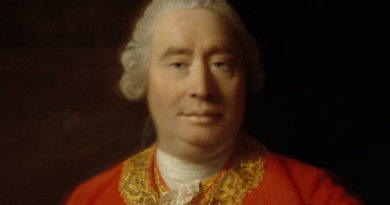Plato – Part 3
Posted on 30 December 2018
Expanding upon his Theory of Ideas to explain the nature of reality itself, Plato imagined the Myth of the Cave.
Inside the Cave
Imagine some people living in an underground cave. They sit with their backs to the mouth of the cave with their hands and feet are chained together in such a way that they can only look at the back wall of the cave.
Behind them, out of their view, is a wall and behind that a fire. Now imagine that various cut-out images are put on top of the wall.
Because there is the fire behind these cut-out images, they cast flickering shadows on the back wall of the cave. So the only thing the cave dwellers can see is this shadow play. They have been sitting in this position since they were born, so they think these shadows are all there is.
Imagine now that one of the cave dwellers manages to free themselves from his chains.
The first thing the cave dweller asks themselves is where all these shadows on the cave wall come from?
What do you think happens when the cave dweller turns around and sees the figures being held up above the wall?
To begin with he is dazzled by the sharp sunlight.
He is also dazzled by the clarity of the figures because until now he has only seen their shadow.
Out of the Cave
If the escaped cave dweller manages to climb over the wall and get past the fire into the world outside, they will be even more dazzled. But after rubbing their eyes the will be struck by the beauty of everything.
For the first time cave dweller will see colors and clear shapes. They will see the real animals and flowers – realising that the cave shadows were only poor reflections of reality.
But even now the escaped cave dweller will ask themselves where all the animals and flowers come from. Then they will see the sun in the sky, and realize that this is what gives life to these flowers and animals – just as the fire inside the cave made the shadows visible.
The joyful former cave dweller could now have gone skipping away into the countryside, delighted in their new-found freedom.
But instead the cave dweller thinks of all the others who are still down in the cave.
The cave dweller goes back.
Once there, the cave dweller tries to convince the cave dwellers that the shadows on the cave wall are but flickering reflections of ‘real’ things.
But the other cave dwellers don’t believe him. They point to the cave wall and say that what they see is all there is.
Then they kill him.
The Natural World and the World of Ideas
What Plato was illustrating in the Myth of the Cave is the philosopher’s road from shadowy images to the true ideas behind all natural phenomena.
He was probably also referring to Socrates, whom the ‘cave dwellers’ of Athenian society killed because he disturbed their conventional ideas and tried to pave the way to true insight.
In the Myth of the Cave, Plato can be seen as illustrating Socrates’ courage and his sense of teaching responsibility. Plato’s point was that the relationship between the darkness of the cave and the world beyond corresponds to the relationship between the forms of the natural world and the World of Ideas.
Not that he meant that the natural world is dark and dreary, but that it is dark and dreary in comparison with the clarity of ideas.
A picture of a beautiful landscape is not dark and dreary either.
But it is only a picture.
Image from bitchute.com






